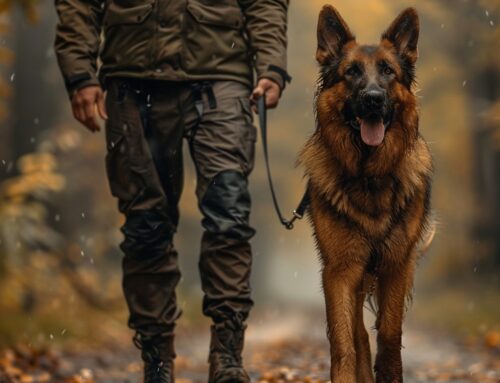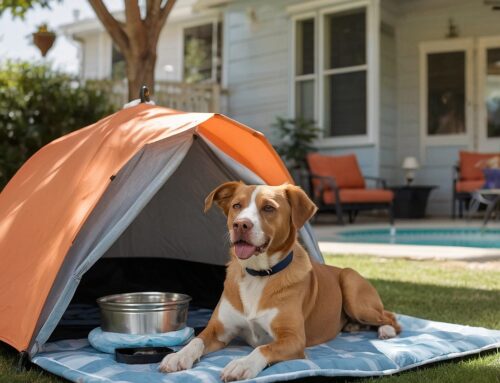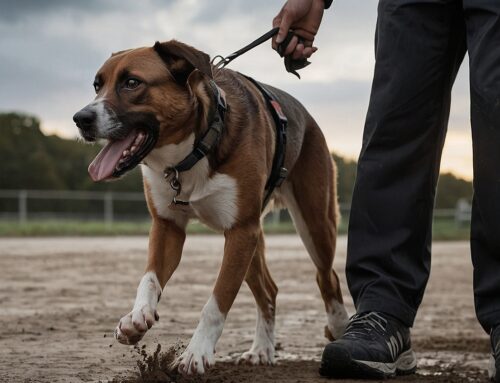Welcoming a dog into your life brings immense joy, companionship, and, undoubtedly, some challenges. Successful dog ownership hinges on effective training, and cultivating certain skills can make this journey smoother for both you and your furry friend. We’ll explore five essential dog training skills that every dog should possess. By mastering these skills, dog owners embark on a journey of shared understanding, cooperation, and a lasting connection with their beloved pets.
1. Leash Training
Leash training is a fundamental skill that plays a crucial role in the overall behavior, safety, and well-being of both dogs and their owners. A well-trained dog on a leash not only makes daily walks more enjoyable but also ensures a level of control that is essential to keep the dog safe and those around them.
This training promotes responsible pet ownership by fostering a sense of control. Dogs are naturally curious and may get easily distracted or excited by various stimuli during walks. A leash provides owners with the means to guide and redirect their dogs, preventing impulsive behaviors that could lead to accidents or unwanted interactions with how your dog responds. This control is particularly important in busy urban areas or places with potential hazards, as it allows owners to navigate their surroundings safely.
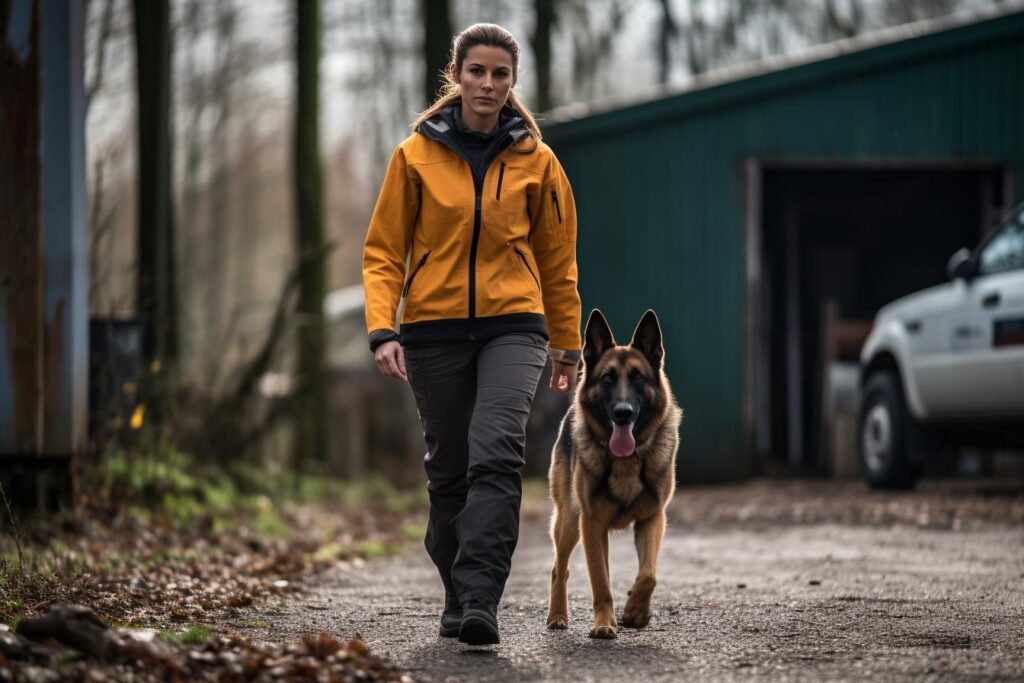
Secondly, leash training is essential for the safety of the dog itself. Uncontrolled roaming may expose dogs to dangers such as traffic, other aggressive animals, or unsafe substances. A well-trained adult dog that responds to leash commands minimizes the risk of them running into potentially harmful situations especially when taught as young puppies. Additionally, it enables the owner to quickly pull the dog away from hazards, preventing accidents and injuries.
Also, this type of obedience training enhances the bond between the owner and their dog. The communication established through leash training builds trust and reinforces the owner’s role as a reliable leader. Dogs that are accustomed to walking on a leash are more likely to look to their owners for guidance in various situations, creating a stronger connection and understanding between the two and overall a fun and rewarding experience together as pet owners and dogs.
Leash training is a cornerstone of responsible dog ownership. It provides owners with the necessary control to ensure their dog’s safety, promotes positive behavior, and strengthens the bond between the dog and its owner. As an essential dog training skill, leash training contributes to harmonious walks, fosters good manners, and ultimately enhances the overall quality of life for both the dog and its human companion.
2. Basic Obedience Commands
Mastering basic obedience commands is an essential foundation for any dog training sessions, forming the cornerstone of effective communication between dogs and their owners. These fundamental basic commands go beyond mere tricks; they establish a framework for discipline, safety, and harmonious coexistence. One of the fundamental essential dog commands in this repertoire is “Sit.” To teach your dog to sit on command serves more than just a practical purpose; it instills a sense of calmness in the canine, providing a baseline for behavior control in various situations. Whether greeting visitors, waiting for meals, or crossing the street, the “Sit” command becomes a versatile tool for fostering a composed and manageable demeanor in the dog and is essential to begin training with this essential command.
Another crucial command is “Stay,” which encourages a dog to maintain a specific position until granted permission to move. This command is invaluable in situations where stillness is required, promoting patience and discipline. It ensures that the dog remains in a safe location, be it while waiting at a busy intersection or during interactions with other animals. “Stay” contributes significantly to the dog’s understanding of boundaries enhances the owner’s ability to control their pet in unpredictable environments and is crucial in the training process.
“Lie Down” is a command that instructs the dog to settle into a prone position. This command proves especially useful in various scenarios, from keeping the dog calm in crowded spaces to creating a relaxed atmosphere when house training. It is an effective tool for managing a dog’s energy level and promoting a tranquil environment. By incorporating “Lie Down” into training, owners can mitigate unwanted behaviors and provide their dogs with a constructive way to release excess energy.
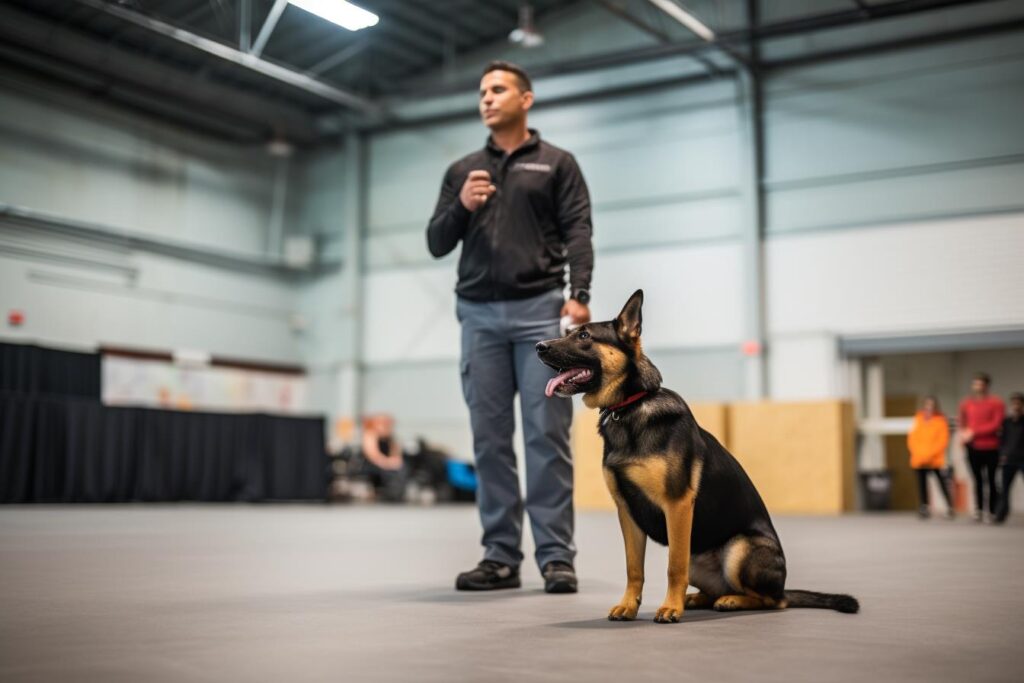
The “Come” command is perhaps one of the most critical for ensuring safety and control. Teaching a dog to return promptly when called establishes a reliable means of communication between owner and pet. Whether in a park, at home, or in emergency situations, the ability to summon a dog effectively contributes to their safety and the well-being of those around them. The “Come” command is an integral component of off-leash training, offering a level of control that is indispensable for responsible dog ownership.
Basic obedience commands are not just a set of skills for dogs to perform; they are the building blocks of a well-behaved and well-adjusted canine companion. “Sit,” “Stay,” “Lie Down,” and “Come” form the backbone of effective communication, promoting safety, discipline, and a strong bond between dogs and their owners. These commands empower owners with the tools needed to navigate various situations confidently, ensuring a positive and harmonious relationship with their four-legged friends when you teach your dog these commands.
3. Recall
Recall, the ability to call your dog back to you on command, is arguably one of the most crucial dog training skills for several compelling reasons. A reliable recall serves as a safety net, ensuring that your dog can be quickly and efficiently brought under control in various situations. Whether navigating a busy street, encountering potential dangers, or just enjoying off-leash activities, the recall command is a key element in preventing accidents and promoting overall safety.
Beyond safety concerns, a strong recall enhances the bond and trust between a dog and its owner. When a dog learns to respond promptly to the recall command, it reflects a deep level of communication and understanding when you train your dog. This mutual trust forms the basis for a positive relationship, as the dog learns that returning to the owner results in positive outcomes, such as treats, praise, or playtime. This positive reinforcement builds a strong connection, fostering a sense of security and reliability in the dog-owner relationship.
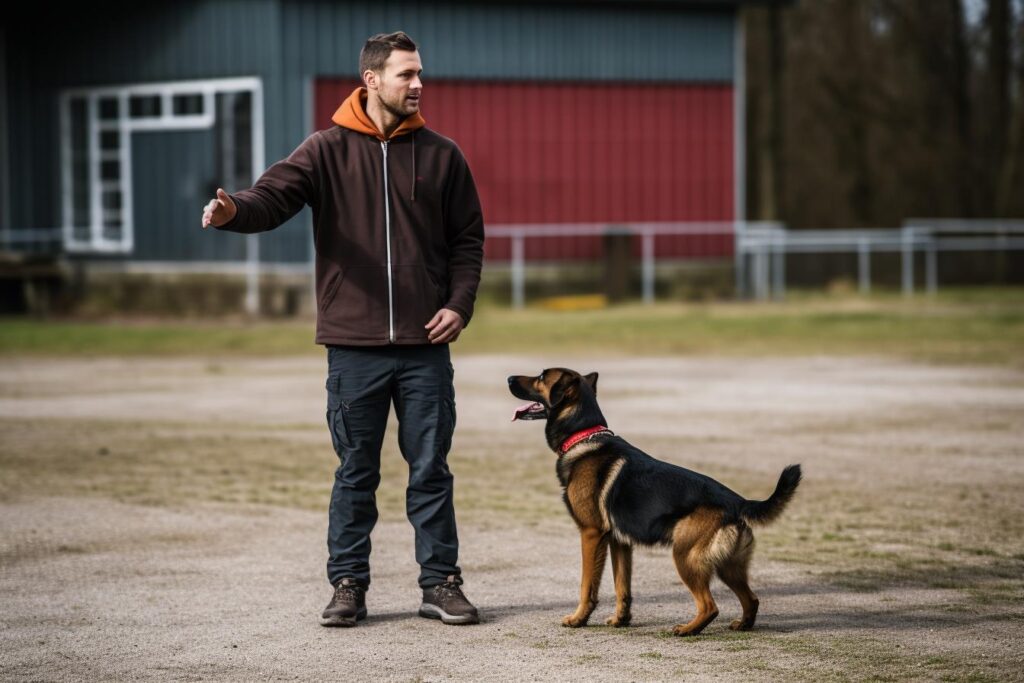
Moreover, a dependable recall expands the opportunities for dogs to enjoy off-leash activities and explore their environment safely. This freedom is vital for a dog’s mental and physical well-being, allowing them to engage in natural behaviors, expend energy, and experience the world around them. Dogs with a strong recall are often more confident and well-adjusted, as they can navigate different environments under the guidance of their owner.
The recall command is a linchpin in responsible dog ownership, safety, and the establishment of a strong bond between dogs and their owners. It provides a means to quickly and effectively communicate with and control a dog in various situations, contributing to a positive, cooperative, and enjoyable relationship. Investing time and effort in mastering recall is an investment in the well-being and happiness of both the dog and the owner. While you can teach your dog this important command, you may also want to send your dog to some proper training by professional dog trainers that will help ease up this process for you.
4. Socialization
Socializing your dog is a critical dog training skill that goes beyond simple commands and obedience. Proper socialization is a holistic approach to introducing your dog to various environments, people, animals, and experiences. This essential skill not only contributes to your dog’s overall well-being but also plays a pivotal role in fostering good behavior and preventing behavioral issues in the long run.
One of the primary reasons socialization is crucial is its impact on a dog’s behavior and temperament. Well-socialized dogs tend to be more confident, adaptable, and less likely to exhibit fear or aggression in unfamiliar situations. Exposing your dog to a variety of people, including children, and other animals from an early age helps shape a positive and balanced personality, making them more comfortable and relaxed in diverse social settings.
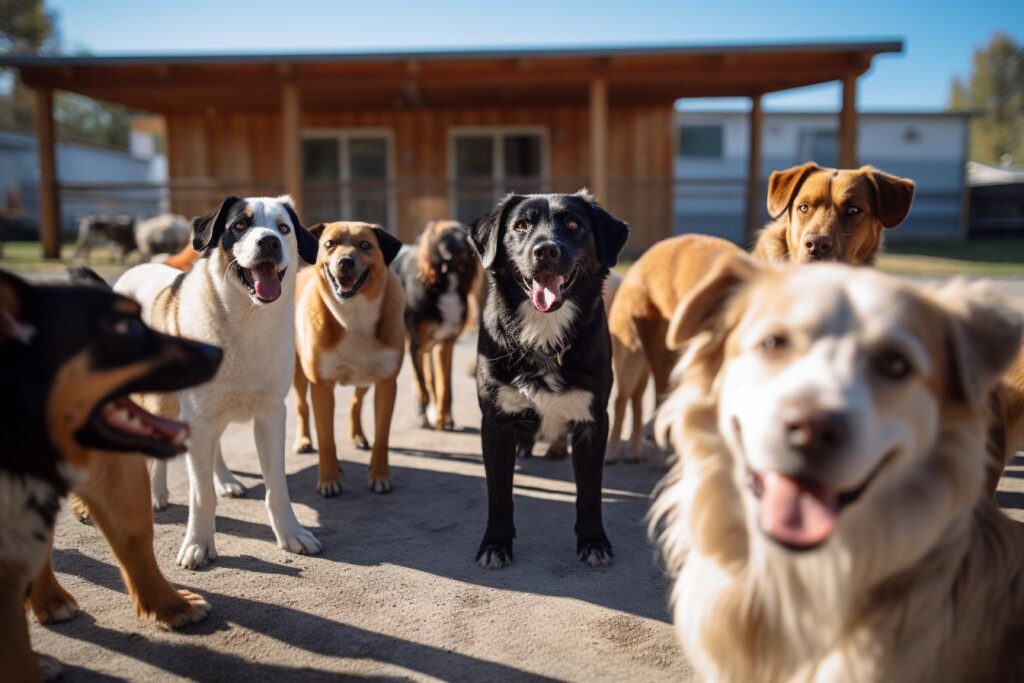
A well-socialized dog is generally more manageable and easier to control. Dogs that are accustomed to various environments and situations are less likely to become overly excited, anxious, or reactive. This makes day-to-day activities such as walks, visits to the vet, or encounters with new people more pleasant for both the dog and the owner.
Socializing your dog is an essential training skill that encompasses much more than teaching specific commands. It is a proactive and preventive approach that shapes your dog’s overall behavior, promotes confidence, and fosters a positive relationship with the surrounding world. By investing time and effort into socialization, you set the foundation for a well-adjusted, happy, and socially adept canine companion.
5. Understanding Your Dog’s Body Language and Behavior
Understanding your dog’s body language and behavior is an essential skill that forms the basis of effective communication and a strong, trusting relationship between you and your canine companion. Dogs, like humans, communicate a wealth of information through non-verbal cues, and being able to interpret these signals is crucial for successful training and overall well-being.
One of the primary reasons for mastering this skill is that it enables you to recognize and respond appropriately to your dog’s emotional state. Dogs express joy, fear, anxiety, excitement, and other emotions through their body language, facial expressions, and vocalizations. By understanding these cues, you can tailor your training methods to suit your dog’s emotional needs, ensuring a positive and stress-free learning experience.
Interpreting your dog’s body language also plays a pivotal role in preventing and addressing behavioral issues. For example, a dog displaying signs of stress, such as panting, lip licking, or avoidance behaviors, may be communicating discomfort or anxiety. Recognizing these signals allows you to adjust the training environment or approach to make it more conducive to learning and reduce stress.
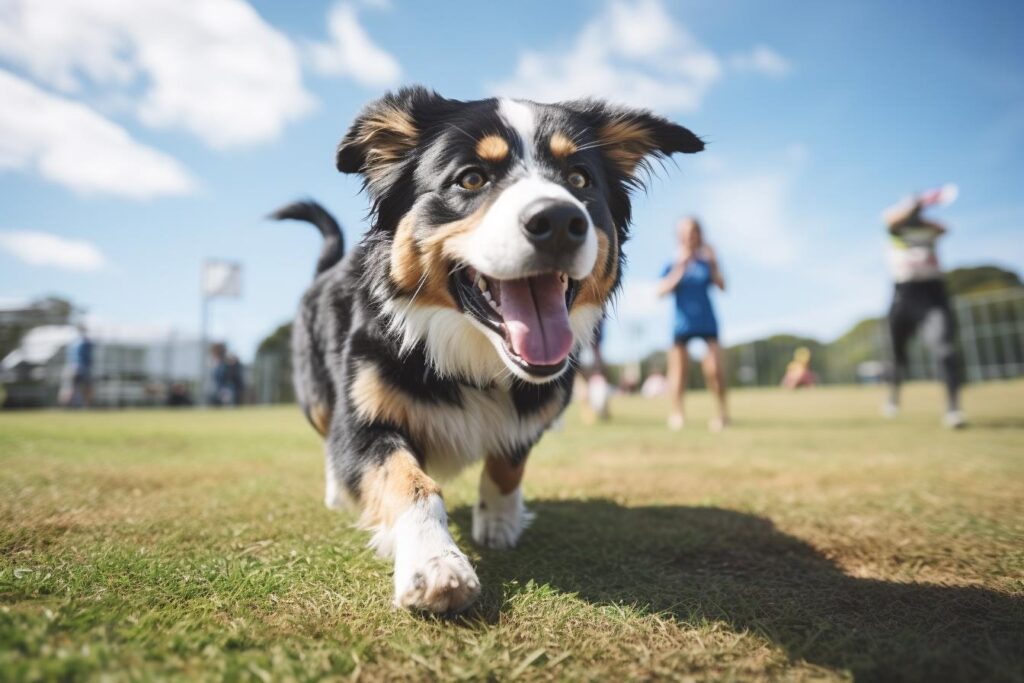
Understanding your dog’s behavior helps you identify potential health issues or pain. Sudden changes in behavior, lethargy, or alterations in appetite could be indicative of an underlying health problem. By closely observing your dog’s behavior, you can detect potential issues early, facilitating timely veterinary care and ensuring your dog’s overall well-being.
In the context of training, understanding your dog’s body language enhances your ability to communicate effectively. You can adjust your tone, gestures, and commands based on your dog’s responses, tailoring the training to their individual learning style. This adaptability fosters a more positive and cooperative learning experience, ultimately leading to better-trained and happier dogs.
Understanding your dog’s body language and behavior is an indispensable skill for any dog owner. It strengthens the bond between you and your canine companion, aids in the prevention and resolution of behavioral issues, and promotes a positive and stress-free training environment. By honing this skill, you enhance your ability to communicate with and care for your dog, creating a mutually rewarding relationship built on trust and understanding.
Mastering the art of dog training involves acquiring a set of essential skills that not only shape a well-behaved canine companion but also nurture a fulfilling bond between the dog and its owner. By cultivating these skills, dog owners embark on a journey of shared understanding, cooperation, and a lasting connection with their beloved pets.
When it comes to training your dog, there is an abundance of skills you’ll need to learn and teach your dog. But with Performance K9 Training we’re here to help ease your load and help with dog’s training. We offer both an Basic Behavior Modification program that is a 2-week board and train program that addresses common dog challenges. And for those looking for something more advanced, Performance K9 Training also offers an Advanced Behavior Modification Program that last about 3-4 weeks. With this board and train program the training is more polished because the dogs spend more time with our training specialists. Whichever training program you choose will help your furry family to become an even better dog to you and your family, while giving the dog a happy and safe environment to learn and socialize with. Make sure to contact us today to learn how to get your dog into our training programs!




